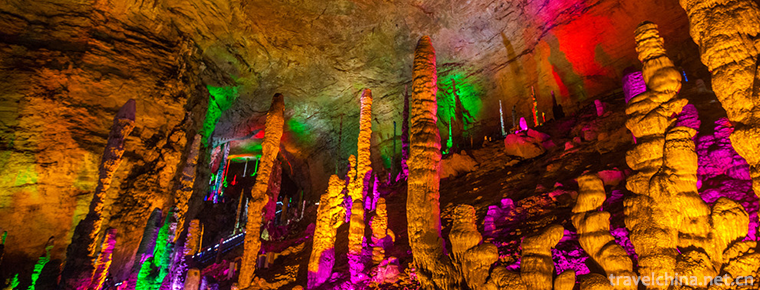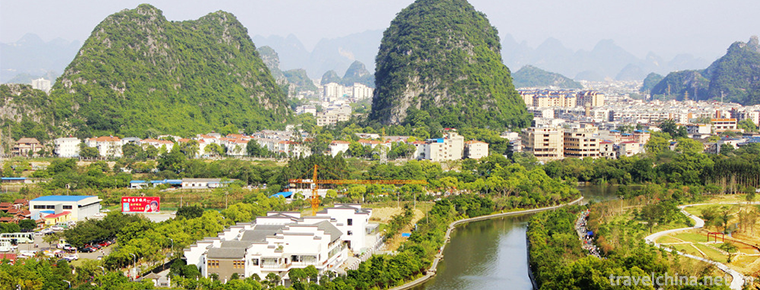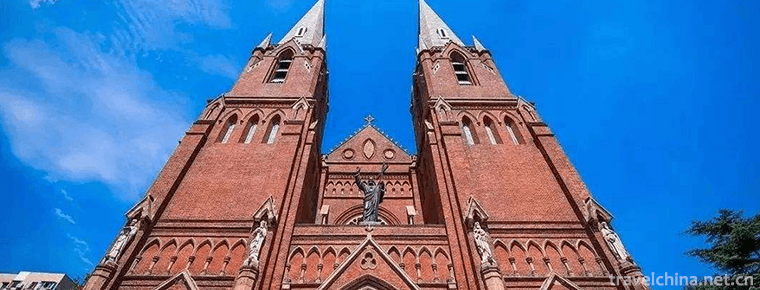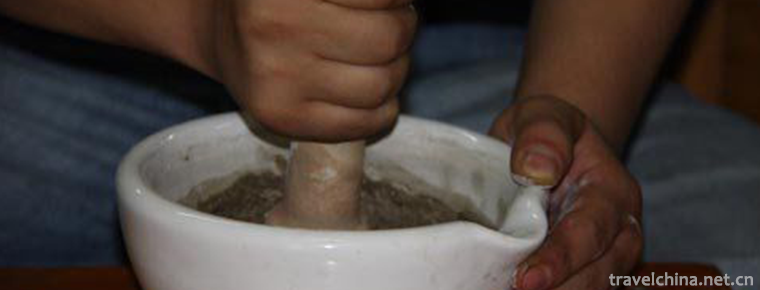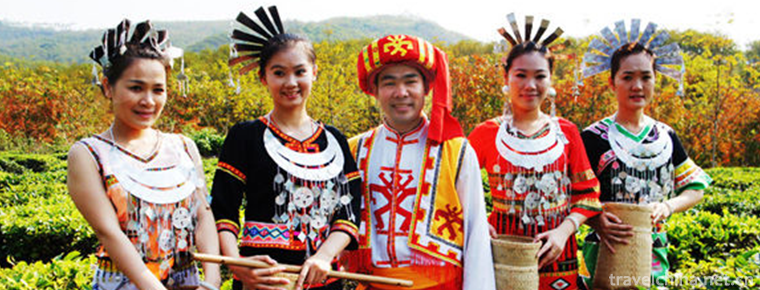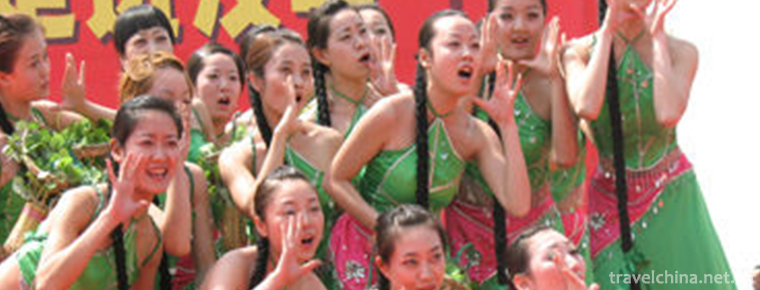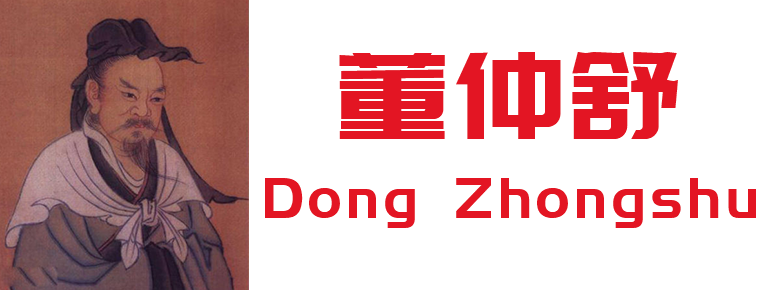Mount QianQianshan Mountain
Mount Qian,Qianshan Mountain is located 17 kilometers southeast of Anshan City, Liaoning Province, with a total area of 44 square kilometers. It is known as the "Pearl of Northeast China". It is a national key scenic spot and a national 5A-level tourist attraction. Qianshan is a branch of Changbai Mountain. Its main peak is 708.3 meters high and its total area is 72 square kilometers.
The total number of mountain peaks is 999, with thousands of them, so they are called "Qianshan", also known as "Jicui Mountain", "Qianhua Mountain", "Qianding Mountain", "Qianduo Lotus Mountain", "Qianshan Mountain" is "no wonder, no stone is steep, no temple is ancient, everywhere secluded". Throughout the ages, Qianshan has always been a popular attraction for tourists. You can see the main gate of Qianshan Mountain. See two lines of big characters: "Eight thousand roads in the South China Sea, the first mountain in eastern Liaoning Province".
Qianshan is composed of nearly 1000 lotus-like peaks with beautiful natural scenery. Although it has no majesty of the five mountains, it has the magnificence of thousands of peaks. With its unique group heroic posture, it is like an endless natural picture scroll, which is displayed on the land of Eastern Liaoning. "Ninety-nine lotus flowers to the blue sky" is the absolute song of Yao Yuanzhi, a poet of the Qing Dynasty. Qianshan is also a holy place of Quanzhen sect, the mainstream Taoist religion. Someone said, "Know the beauty of Qianshan Mountain in Guandong, and there is no regret without looking at the five mountains."
Qianshan is located 17 kilometers southeast of Anshan City, Liaoning Province, with a total area of 44 square kilometers. It is known as the "Pearl of Northeast China". It is a national key scenic spot and a national 5A-level tourist attraction.
It borders the Bohai Sea in the South and Changbai Mountain in the north. It is famous for its beautiful peaks, steep rocks, secluded valleys, ancient temples, Buddha's height, peculiar pines and flourishing flowers. It has the characteristics of dense scenic spots, exquisite and exquisite moving scenery.
Qianshan is a branch of Changbai Mountain. Its main peak is 708.3 meters high and its total area is 72 square kilometers. The total number of mountain peaks is 999, with thousands of them, so it is called "Qianshan", also known as "Jicui Mountain", "Qianhua Mountain", "Qianding Mountain", "Qianduo Lotus Mountain". Qianshan "has no unique peak, no stone, no cliff, no temple, no ancient, everywhere secluded". Throughout the ages, it has been a popular attraction for tourists.
Qianshan consists of Qifeng, Yansong, Ancient Temple and Pear Blossom. According to the natural terrain, it can be divided into four scenic spots: the north, the middle, the South and the west. Including 20 small scenic spots and 228 scenic spots, distributed in several valleys. Beautiful scenery, different seasons, is a set of temples, gardens in a mountain scenic tourist resort. In midsummer, the climate here is extremely cool and the air is very fresh. It is absolutely a wise choice for you to go to Qianshan for summer vacation.
Qianshan has different sceneries throughout the year: pear blossoms in spring, green mountains in summer, red leaves in autumn, falling clouds and flying rainbows; silver-coated snow waves in winter. Beautiful scenery throughout the year, attracting tourists lingering forget to return.
Qianshan not only attracts many tourists with its beautiful scenery, but also is more suitable for photographers who are obsessed with natural scenery and colorful pines and blue and white to engage in creative work all year round. In Qianshan in May, there are pear blossoms everywhere, among the green bushes, the fragrance of flowers comes to refresh the heart and spleen. In the early summer of June, the Qianshan Mountains are filled with pines and trees, which seem to be performing a green waltz, giving people a harmonious and beautiful feeling. In the golden autumn and October, under the blue sky and white clouds, all over the mountains and countryside are golden yellow, with frost and red leaves dyed, which is the golden season for photographic harvesting. In December, Qianshan was covered with silver. In the snowstorm, pines and cypresses are more upright and the mountain is particularly steep. The rare cold and magnificent beauty will make the photographic creation more beautiful.
Qianshan is one of the famous tourist attractions in China, formerly known as Qianduolian Mountain. Suitable for outdoor sports enthusiasts like mountain climbing. Every year the pear blossoms and the scenery after snow will make people linger and forget. Mountain roads, winding and steep, or winding, are impressive tourist attractions.
Qianshan is the perfect unity of natural landscape and humanistic landscape, while religious culture is the main part of Qianshan humanistic landscape. "Linshan has already heard the golden bell ringing and the incense of the jade stove before entering the temple". Qianshan has more than 20 temples, views, palaces, temples, nunneries and so on, just like shining gems, inlaid in Qifeng and Xiugu, making the ancient Qianshan more attractive. Some of these ancient and magnificent temples are towering over dangerous peaks, some are nestled in the surroundings of mountains, some are situated on sunny slopes, some are hidden in the shade of ancient pine and strange stones, and are integrated with natural scenery to form a beautiful, elegant and quiet moving picture. As the Zhengguo Gong Ai Xinjue Luogaosai described in his poems in the early Qing Dynasty, "Fanyu rises from the heavens, Xiangyan sounds green springs. Xutang clear dew, quiet chanting cicada. Luofengcui is inducted freely, and Pine contains smoke like the top. The temple takes the peak as its screen and the mountain borrows the temple as its prominence. In addition to temples, there are numerous caves, pagodas, pavilions and steles, which are also an important part of the cultural landscape of Qianshan.
Qianshan has a long history. In the Northern Wei Dynasty, there were Buddhists in Qianshan.
In the Liao and Jin Dynasties, Buddhism became more prosperous. The famous "Five Zen Groves" Xiangyan Temple, Da'an Temple, Zuyue Temple, Zhonghui Temple and Longquan Temple have formed a certain scale of ancient buildings.
Since the Ming and Qing Dynasties, Taoism has entered its heyday, with nine palaces, eight views and twelve Mao'an. There are more than 30 temples and hundreds of monks and Taoists in the panoramic area. Xianrentai, the first peak of Qianshan Mountains, is located in the south of Qianshan Mountains. There are eight immortal stone statues and stone chessboard on the peak. Legend has it that Fairies Fly by cranes and play games on the stage to get their names. Located in Beigou, Wuliangguan is the largest of many temples in Qianshan, and its architecture is also the most exquisite in Qianshan.












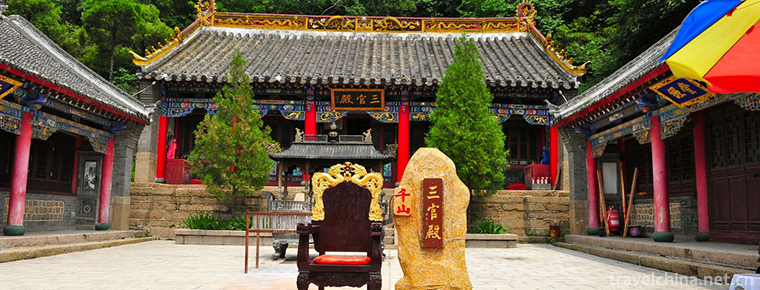
-
Online Shopping
Online shopping is to retrieve commodity information through the Internet, and send out shopping requests through electronic order forms, then fill in the number .
Views: 218 Time 2018-11-13 -
The Yellow Dragon Cave huanglong Cave
Located in Wulingyuan Scenic Area, the core scenic spot of Zhangjiajie City, Hunan Province, Huanglong Cave is an integral part of the World Natural Heritage Site and Zhangjiajie World Geopark.
Views: 249 Time 2019-01-18 -
Jiangwan Scenic Area of Wuyuan
Jiangwan Scenic Area is located in the northeast of Wuyuan County, Jiangxi Province, Shangrao City. It is an ancient village with rich Huizhou culture. Up to now, the village has preserved a large num.
Views: 201 Time 2019-01-21 -
Xujiahuiyuan Scenic Area
Xujiahuiyuan Scenic Spot is located in Xujiahui, Shanghai Metropolitan Tourism Center Circle. It starts from Wanping South Road, Tianping Road and Huashan Road in the east.
Views: 124 Time 2019-02-26 -
March 3 of Buyi Nationality
Buyi "March 3" is a traditional festival held by Buyi people on the third day of March in the lunar calendar. It mainly takes the form of offering sacrifices to the gods of the society and s.
Views: 128 Time 2019-04-04 -
Production Techniques of Tibetan Mineral Plant Pigments
Since the emergence of human beings, mineral pigments have been accompanied by human beings. Mineral pigments were first used to draw murals.
Views: 205 Time 2019-04-09 -
Li nationality costumes
Li costumes are mainly made of island cotton, hemp, kapok, bark fiber and silk. In ancient times, some places also used the bark of twig or bloody throat trees as clothing materials. This kind of dres.
Views: 129 Time 2019-05-12 -
Polo
Polo refers to a sport in which horses are riding and polo clubs are used to hit the ball. In ancient China, Polo was called "hitting the bow". It was invented in the Han Dynasty and flouris.
Views: 137 Time 2019-05-15 -
Pucheng Folk Song
Shaanxi folk song is the continuous interaction, integration, creation, development and transmission of various artistic forms among the working people in the production practice and social practice o.
Views: 152 Time 2019-06-09 -
Dong Zhongshu
Dong Zhongshu (179 BC - 104 years ago), Guang Chuan (Hebei Jingxian County southwest, Jingxian County, Gucheng, Zaoqiang three counties junction) people, the Western Han Dynasty. philosopher emperor j.
Views: 112 Time 2019-09-07 -
Yibin transportation
Yibin is a transportation hub city in South Sichuan, which is famous for its comprehensive three-dimensional transportation network of water, land and air. It is located at the starting point of the golden waterway of the Yangtze River and the strategic point of Sichuan Yunna.
Views: 119 Time 2020-12-18 -
Guangan Education
As of 2019, there are 1198 schools at all levels in Guang'an City, including 696 kindergartens (including 119 public kindergartens), 194 primary schools, 235 junior high schools, 6 special schools, 1 work study school, 42 ordinary senior high schools (includi.
Views: 376 Time 2020-12-19

